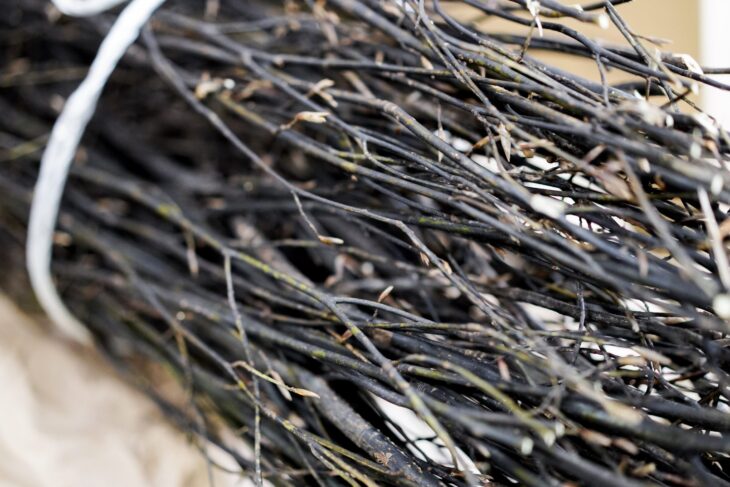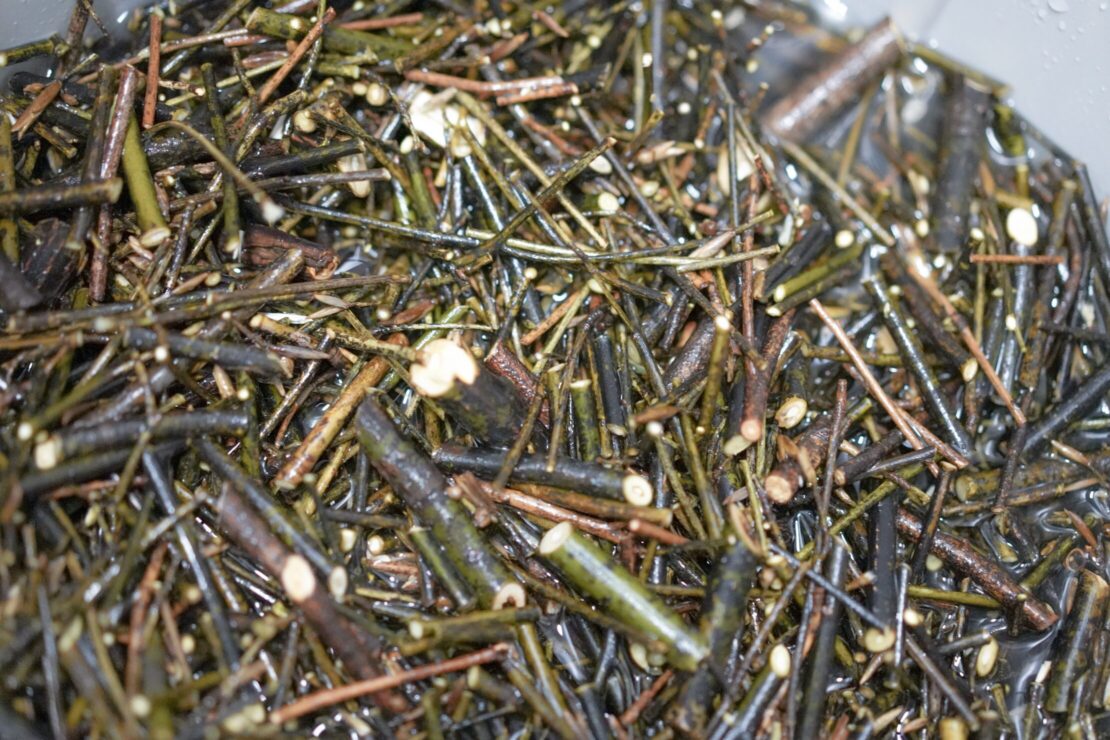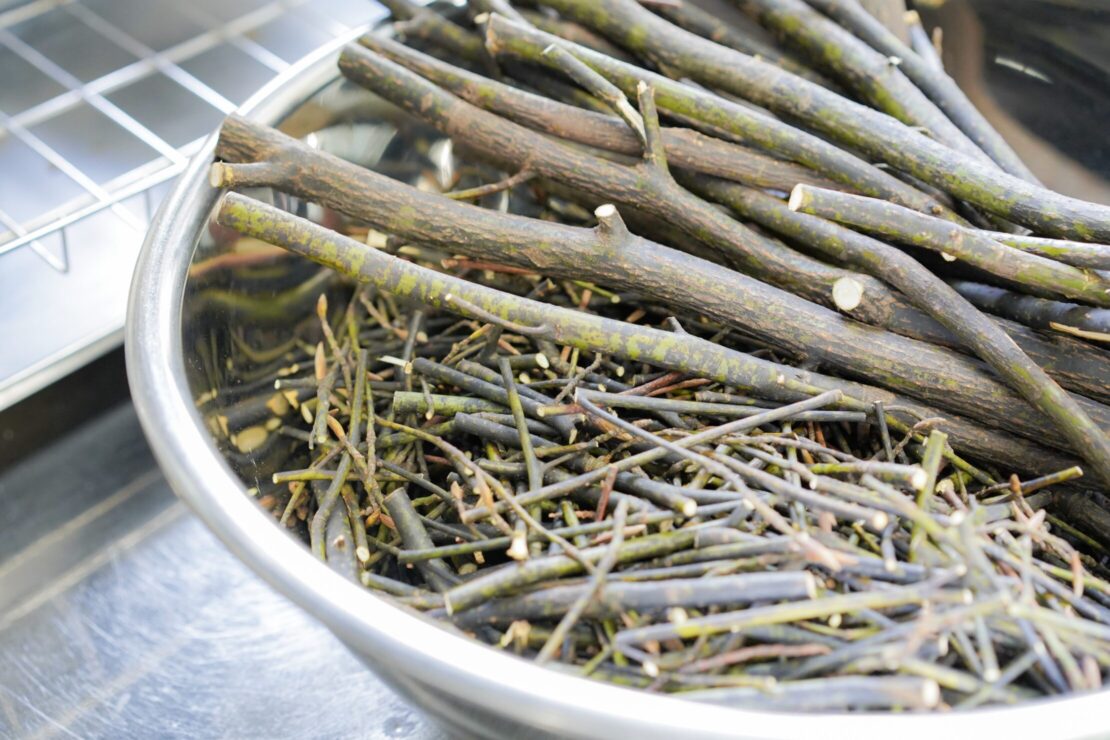Hello. My name is Yamada, and I am in charge of this issue of “Diary.
The cherry blossom season is over, and the days are pleasantly green with lush foliage.
How are you all doing? I am a little bit excited because of the approaching GW (Golden Week).
May is the month of pleasant weather and greenery, and summer is gradually approaching.
This month’s limited edition key botanical is “Lindera umbellata”.

As some of you may know, Lindera umbellata is a camphor tree that grows wild in the mountains of Japan and contains terpineol, linalool, cineole, and linneol.
It is often used as a botanical in domestic gin, and an infusion of Lindera umbellata root is a herbal medicine called “bird camphor” or “Lindera umbellata Thunb” which is also used in medicinal drinks.
Other products such as “Lindera umbellata oil,” which is extracted from the fruit and branches and leaves, is used in cosmetics and fragrances, and the branches have long been used as high-grade toothpicks and chopsticks.
In the days when there were no toothbrushes, the branches were used like today’s toothbrushes.
Lindera umbellata are used for a variety of purposes, but this time, we distilled it using an abundance of its branches.
The aroma is easy to sense, with the Lindera umbellata at the forefront of the fragrance.
The Lindera umbellata used for this event are from the NPO “UNE”. Thank you very much for the many Lindera umbellata!
And thank you, Director Umeda, for going to pick them up!
In this distillation as well, the chromophyll and base gin were distilled separately and blended together later.
Incidentally, both the distillation of the chromoge and the distillation of the gin used a base that had been charcoal filtered once.
I’ll spare you the details of the process, but the clearer base makes the gin more spectacular because it allows the fragrance to ride on the top, where it can easily disappear and be hidden.

When distilling Lindera umbellata, we cut the branches, wash them lightly with water, and soak them before starting distillation.
Among the various methods we tried, this method seemed to eliminate the lyeiness of the wood and bring out the good aroma of Lindera umbellata even more.
Even though I only lightly rinsed the cut Lindera umbellata with water, when I removed the branches, the water was the color of India ink… I was quite surprised because I had not imagined it. There was a slight pickle-like element to the distillation of the water…
We started the distillation, tasted and smelled it several times, and despite the ever-changing aroma and taste, I personally loved it at every step.
At first, the aroma was spontaneous and perfume-like with a slight wood ashyness, and the taste was sweet and gentle, like baked goods made with eggs.
I began to take the parts that I would use for the blend, and the fragrance was very good, hard to describe in words.
It is hard to describe, but I could imagine a thin misty forest with the sun shining through the trees.
I was very happy during the distillation and wanted to keep smelling the aroma of chromo during the distillation.
I personally like perfumes, especially vanilla and oriental types, and now that I know the benefits of Lindera umbellata from this distillation, I would like to buy perfumes and cosmetics using Lindera umbellata.
I am getting more and more exposed to various plants, and when I buy something with a fragrance, I try to see what is in it, “Is this what it smells like? …… and I try to take a look. I’ve been secretly enjoying it lately.
In writing the diary, I was very curious about the ingredients contained in it, so I did some research and found out that cineole, which is found in Lindera umbellata, is also found in wormwood.
Why wormwood all of a sudden? Some of you may be wondering why wormwood is a plant that makes up the majority of the plants in the spirits (raw alcohol) we use.
Therefore, we felt that it would enhance the goodness of each other and make a good match.

As I mentioned at the beginning, the limited edition 05 “Lindera umbellata” will give you a sense of Lindera umbellata in the foreground.
But that does not mean that it fights with the original base gin, and the two complement each other’s good parts.
The refreshing aroma and taste of YASO, reminiscent of grasslands, combined with the luxurious, clear, perfume-like aroma of Lindera umbellata and its refreshing, citrus-like flavor, makes this gin perfect for the coming season.
Although it is a pleasant season, there are times when you may not be in the mood due to May illness or daily fatigue.
At such times, we hope that the fragrance of Lindera umbellata will soothe you and help you relax, even if only a little.
Thank you for reading to the end. I hope you look forward to next month’s diary.
See you~~!


